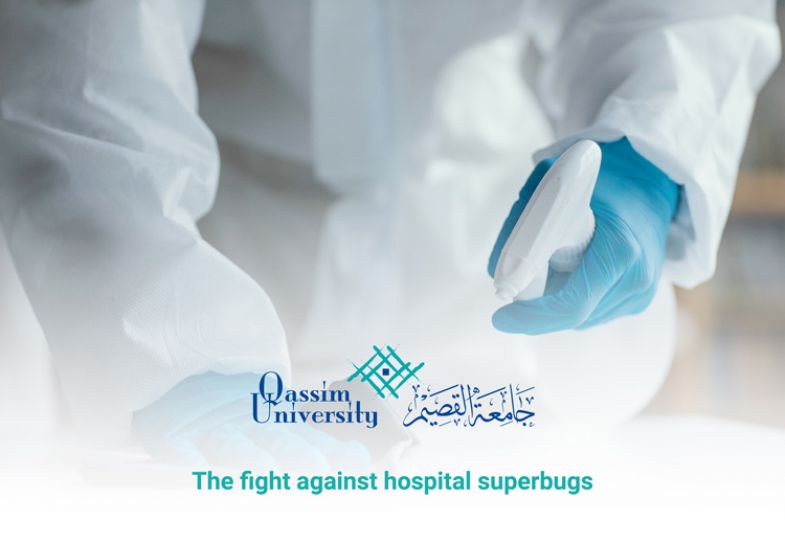
Even with the best infection control procedures in place, hospitals are breeding grounds for infection, placing patients at risk and increasing the pressure on strained healthcare services. Researchers at Qassim University are improving our understanding of antimicrobial-resistant bacteria and developing materials that could inhibit their growth
Hospital-acquired infections are one of the biggest challenges facing frontline healthcare services around the world. The statistics are sobering. The Centers for Disease Control and Prevention estimates they result in 99,000 fatalities per year in the US alone, from some 1.7 million infections, all of which reduce healthcare capacity and increase workload for medical staff.
The problem affects well-resourced and developing healthcare systems alike. Science must find a way to kill these bacteria. Ahmad Almatroudi, associate professor in the Department of Medical Laboratories at Qassim University, leads pioneering research into infectious disease management. He says these so-called superbugs, such as MRSA and vancomycin-resistant Enterococci, are so hard to kill because of the way they are arranged on a cellular level. In clinical settings, they have proven impervious to disinfectant, heat and other conditions typically hostile to bacteria. Inside the body, they resist antibiotics. And it is all because they have formed a protective biofilm of extracellular polymeric substances, allowing microbial communities to thrive.
“They shield it from antibiotics, so they become drug resistant,” Almatroudi says. “The biofilm is a thousand times more resistant to antibiotics than planktonic bacteria. Also, they shield it from harsh environmental stresses, like disinfectant, and mechanical and physical pressures. When we clean these surfaces we cannot rupture this biofilm, so they can be a long-term source of infection.”
When Almatroudi says long-term, he means it, citing an example where an infection shut an intensive care unit for six months. Once it reopened, the infection spread again, linked to the very same strand of bacteria that caused the first outbreak. Hospitals are especially vulnerable because there are a lot of patients, a lot of pathogens, and medical emergencies make for pressurised situations that can lead to accidental breaches of hygiene protocols.
“We don’t have enough healthcare workers and there is too much pressure on them,” says Almathroudi. “Especially in intensive care units because patients need immediate intervention. Some patients are collapsing. They don’t have time to wash their hands.”
Almatroudi’s research is deeply personal. When he was nine years old, his father died from a hospital-acquired infection. But he has hope that his work will lead to a breakthrough in the fight against infections, and is working on developing an advanced nanoparticulate coating for surfaces such as medical devices and clinical hardware that will inhibit bacterial growth.
“It prevents bacteria from attaching to the surface,” he says. “It’s antimicrobial, but it’s physical, so they cannot easily attach to a surface. My team has done a lot of work in this area. We disrupted the biofilm. We have reached that promising stage.”
The next step is finding a way to develop these advanced antimicrobial approaches into products that are affordable to healthcare systems worldwide. That will take investment. With the economic impact of infections measured in the billions of pounds, it might be a small price to pay.
Find out more about Qassim University.















